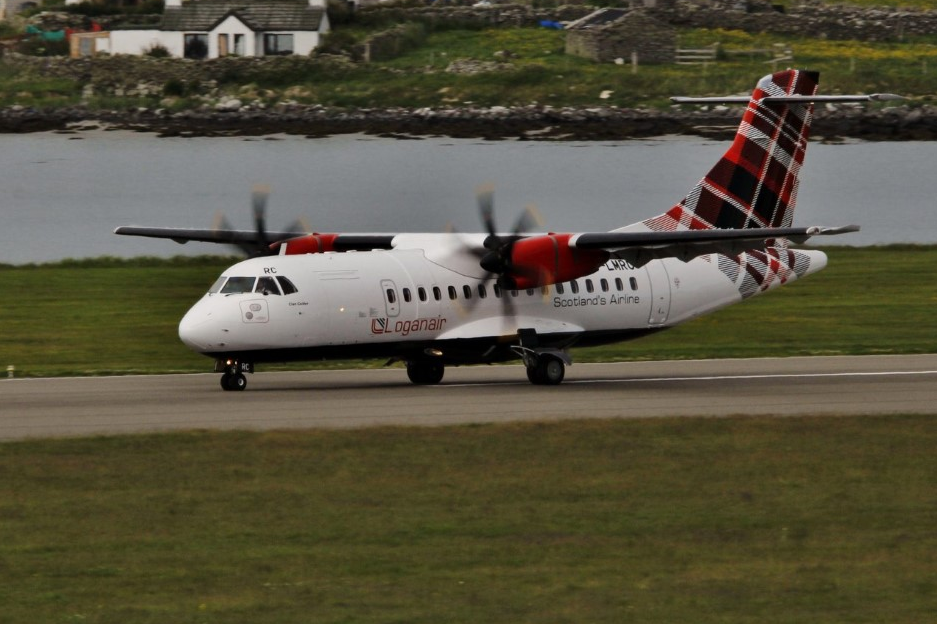Missing links: The Flybe domestic routes that have been abandoned
Exclusive: Barely half of the UK network of the collapsed regional airline has been filled, but new services have appeared

Your support helps us to tell the story
From reproductive rights to climate change to Big Tech, The Independent is on the ground when the story is developing. Whether it's investigating the financials of Elon Musk's pro-Trump PAC or producing our latest documentary, 'The A Word', which shines a light on the American women fighting for reproductive rights, we know how important it is to parse out the facts from the messaging.
At such a critical moment in US history, we need reporters on the ground. Your donation allows us to keep sending journalists to speak to both sides of the story.
The Independent is trusted by Americans across the entire political spectrum. And unlike many other quality news outlets, we choose not to lock Americans out of our reporting and analysis with paywalls. We believe quality journalism should be available to everyone, paid for by those who can afford it.
Your support makes all the difference.Until 2am on 5 March, many UK travellers relied on Flybe, whose route network could be summed up as: “anywhere to anywhere, possibly changing planes in Birmingham, Southampton or Manchester”.
Europe’s biggest regional airline – slogan, "Faster than road or rail" – was the choice of passengers in a hurry from Belfast to Cardiff or Manchester to Edinburgh.
Flybe had more flights than any other airline to and from George Best Belfast City and many other UK airports, including Aberdeen and Manchester.
But while the network was appealing, it proved hopelessly unprofitably for the Exeter-based airline. And that could explain why, five months after the collapse, many of the routes are still unfilled.
Sean Moulton, a UK aviation connectivity analyser, has identified the busiest UK domestic routes in 2019 which remain unserved.
At the top of the ex-Flybe list is Edinburgh to Manchester, which had an average of 318 passengers per day last year.
Edinburgh to Cardiff is just behind, at 304 passengers per day. Manchester to Newquay, Belfast City to Cardiff and Glasgow to Manchester complete the top five.
While rail is not a practical alternative for travellers in a hurry for most of those routes, the links from Scotland’s two biggest cities to Manchester are perfectly practical. Transpennine Express has trains every two hours from Manchester Airport to the heart of Edinburgh, and there are easy connections to Glasgow Central.
The main replacement for Flybe flights is Loganair, which became Britain's biggest regional airline overnight after its rival’s collapse. It has snapped up routes that look profitable, such as Edinburgh and Glasgow to Southampton and Newcastle to Exeter.
The chief executive, Jonathan Hinkles, said "Loganair has stepped in to assure UK connectivity across 17 routes formerly flown by Flybe, and we're pleased to be doing so.
"However, we're also taking a cautious approach - we can't and won't replace every route that Flybe served; if we did, we'd simply replicate the same issues that led to its failure.
"Some of the routes were not viable, and for our business to be successful in the long term, we have to remain focused on the core heartlands for Loganair."
The Scottish carrier is also teaming up to offer connections with Blue Islands, which is filling some of the gaps from Jersey and Guernsey to the UK as well as launching routes from Manchester to Exeter and Southampton – the latter in competition with Eastern Airways.
Aurigny is connecting its home island of Guernsey with Birmingham and Exeter.
Northern Ireland depends more on domestic flights than any other part of the UK, and Stobart Air – flying as Aer Lingus Regional – is launching services from George Best Belfast City to Birmingham, East Midlands, Edinburgh, Exeter, Leeds Bradford and Manchester.
Eastern Airways is launching services on old Flybe routes such as Manchester to Southampton, and trying new links such as Teesside to Newquay – turning an all-day journey by road or rail into a 90-minute hop. It has proved so popular that the frequency is being increased.
Flybe tried, not always successfully, to stay under the radar of easyJet, Britain's biggest budget airline, which is taking over from Birmingham to Edinburgh and Glasgow. The number of daily flights has halved, but there are twice as many seats on easyJet’s bigger planes.
The carrier is also stepping up frequency on several routes to and from Belfast International.
One Flybe route that started only in March 2019 proved a big success: Heathrow to Newquay. British Airways has now taken it over, but the frequency is far lower than the previous four flights per day.
In 2005, BA paid Flybe to take over its routes not beginning or ending in London.
During the coronavirus pandemic it became clear that BA has abandoned another prime domestic route from Heathrow, to Leeds Bradford. In 2019 it averaged 274 passengers per day.
A former British Midland route, from Teeside to Heathrow, has been resurrected by Eastern Airways, which will fly from 14 September.
Mr Moulton said: “I can’t say I saw that one coming.”
Join our commenting forum
Join thought-provoking conversations, follow other Independent readers and see their replies
Comments